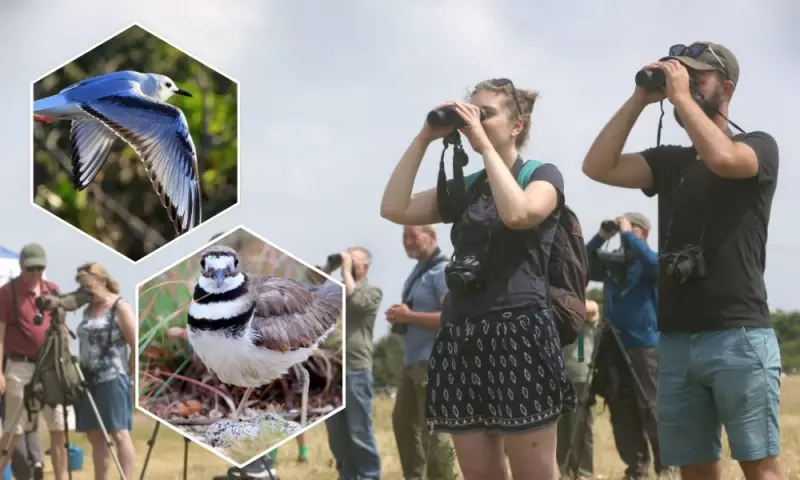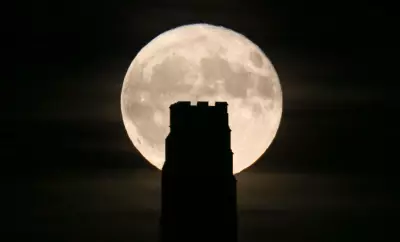
Rare Avian Visitors Delight UK Birdwatchers
This November has brought an extraordinary array of rare bird species to British shores, creating excitement among the nation's birdwatching community. As winter approaches, numerous migratory birds have begun their annual journey to warmer climates, with some unexpected visitors travelling thousands of miles from their usual habitats.
Rare Bird Alert, the specialist website that tracks unusual sightings, has reported dozens of remarkable observations across England, Wales, Scotland and Northern Ireland in the past week alone. These include species from as far away as North America, China, and the Persian Gulf, many of which are rarely seen in British territory.
Top 10 Unusual Bird Sightings This Week
Black-faced buntings have caused particular excitement among ornithologists. These tiny songbirds from eastern Asia are described as 'extremely rare' visitors by the British Trust for Ornithology. Remarkably, four were recorded this week: in Nanjizal Valley, Cornwall; Portland Bill, Dorset; and two on Fair Isle, Shetland.
Dusky warblers, resembling chiffchaffs with more muted colouring, appeared at five different locations. These regular but scarce visitors from north-eastern Asia were spotted in Filey Brigg, North Yorkshire; Stiffkey, Norfolk; Minsmere RSPB, Suffolk; Sandwick, Shetland; and Tresco, Scilly.
The killdeer created a stir when one was sighted on Skokholm Island, Pembrokeshire. This North American native, described as a 'mega highlight' by Rare Bird Alert, is known for its unusual defence mechanism of fluffing up and running at cattle to protect its nest.
Bonaparte's gulls, the only gull species known to nest in trees, made appearances on Papa Westray, Orkney and in County Antrim, Northern Ireland. These rare visitors from North America typically generate a few sightings each year.
Richardson's cackling geese, delightfully named and resembling miniature Canada geese, were spotted in Argyll, Scotland and Cumbria. The BTO notes these are 'extremely rare' visitors from North America, with only a handful reaching Britain annually.
Lesser scaup ducks have chosen varied locations for their winter stay, appearing in Northamptonshire, Cornwall, Somerset, Dumfries & Galloway, and County Antrim. These North American natives are less common than their greater scaup counterparts.
Western oriental turtle doves, cousins to Britain's own threatened turtle doves, made a rare appearance on the Shetland Isles. These birds typically breed across Asia and are extremely uncommon visitors to the UK.
Pallid swifts, usually confined to Mediterranean regions and the Persian Gulf, surprised observers by appearing in Foreness Point, Kent; Portland Bill, Dorset; and Dundalk, Ireland.
The steppe grey shrike, infamous for impaling its prey on thorn bushes, was recorded in Cornwall. Its scientific name Lanius means 'butcher', reflecting its macabre feeding habits.
Pallid harriers, resembling paler versions of hen harriers, have been regularly seen flying over Glamorgan, Wales in recent weeks, with the most recent sighting occurring on Thursday.
Why Unusual Birds Visit UK Shores
Bird migration patterns can bring unexpected visitors to British coasts for various reasons. Severe weather conditions, navigation errors, and changing climate patterns can all contribute to birds appearing far from their typical ranges. The UK's position on migration routes and its relatively mild winter climate make it an attractive destination for birds blown off course.
The British Trust for Ornithology emphasises that while some rare visitors appear annually in small numbers, others represent truly exceptional sightings that might not be repeated for years. This week's diversity of species from multiple continents demonstrates the global nature of bird migration and the importance of the UK as a destination for wandering species.
For birdwatchers hoping to spot these or other unusual species, coastal areas, particularly in Cornwall, Shetland, and other migration hotspots, offer the best opportunities during this peak migration period.





